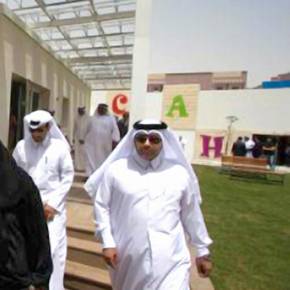Archive View
Grid View
List View















environment
Haberl named fellow of international energy organization
posted
October 11, 2013
After almost three decades spent finding energy saving solutions for commercial and residential buildings, Jeff Haberl, professor of architecture at Texas A&M, was recently elevated to a fellow in the International Building Performance Simulation Association.

Dutch, U.S. scientists partner on flood mitigation research
posted
October 9, 2013
Last summer, Texas A&M hazard mitigation researchers partnered with their Dutch counterparts at Delft University in The Netherlands to developed a joint research agenda to combat a common enemy — flooding.

MLPD students’ ideas add value to Houston
posted
October 8, 2013
The underutilized southeastern area of downtown Houston could see its property values rise with the addition of green space and a signature landmark, concluded Texas A&M Master of Land and Property Development students in an analysis published last spring by the Urban Land Institute’s Houston Council.
Research eyes neighborhood walkability
posted
August 16, 2013
Two Texas A&M College of Architecture professors who are researching how urban design can encourage, rather than impede, physical activity and help combat sedentary lifestyles.

TTC helping small towns make plans
posted
July 29, 2013
In partnership with Texas A&M’s AgriLife Extension Service, the Texas A&M College of Architecture is expanding its 25-year-old Texas Target Cities program that helps communities lacking resources and expertise resolve issues critical to their future.
Nation's safety enhanced by resiliency studies
posted
July 15, 2013
Though natural and man-made disasters are inevitable, scientists at the Texas A&M College of Architecture are working on ways to minimize their impact, hasten recovery and gain valuable insight from the process.
Design showcases groundwater saving techniques
posted
June 24, 2013
Texas A&M landscape architecture students created a master plan for converting a regional groundwater conservation district's grounds into an educational facility for demonstrating the latest groundwater conservation techniques.
Study shows 100-year flood plain not good flood loss predictor
posted
May 29, 2013
The 100-year floodplain, a longstanding metric for determining the chance of an area’s inundation by flood waters, appears to be an inaccurate measure for predicting potential flood-related loss, said Samuel Brody, professor of urban planning at Texas A&M.
Students propose energy-saving plans for mix-use complex
posted
May 28, 2013
Measures to reduce energy use in a high-profile Northgate mixed-use residential development were detailed in construction proposals prepared this spring by construction science students at Texas A&M.

Qatar study looks at energy efficiency of dissimilar homes
posted
May 7, 2013
The difference in energy consumption between two homes in Qatar — one built to a strict energy efficiency standard and the other using conventional construction — is being evaluated in a Texas A&M College of Architecture study.

Mapping at-risk populations aids hazard mitigation
posted
April 26, 2013
Emergency management planners could reduce losses and strengthen community resilience by mapping socially vulnerable areas and focusing hazard mitigation efforts where they are most needed, said Shannon Van Zandt, a Texas A&M urban planning professor.
Texans realize energy savings from ESL recommended codes
posted
April 24, 2013
Texans enjoyed lower home electric bills and cleaner air after state legislators in 2001 adopted new energy and construction codes for single-family residences, according to a report from scientists from the Texas A&M Energy Systems Laboratory.
Culp leads software design effort at ESL
posted
April 23, 2013
A building energy use "tune-up" procedure developed by researchers at the Texas A&M Energy Systems Lab has so far yielded more than $100 million in energy savings from little more than 300 client buildings, said Charles Culp, professor of architecture and ESL associate director.
Ph.D. study eying occupancy-based HVAC system
posted
March 11, 2013
Significant energy savings could be realized in small homes in hot climates with an air conditioning system being researched by Simge Andolsun, a Ph.D. architecture student at Texas A&M, that cools rooms based on where people are at different times during the day.

Students creating high-density plans for Texas A&M
posted
February 28, 2013
With guidance from award-winning architect Miguel Roldán, graduate architecture students are developing plans and high-density building solutions for the future growth of Texas A&M's College Station campus.
Follow Us
Facebook Twitter Vimeo Youtube Flickr RSS
Recent Posts

Planning prof heads study of disaster housing aid
June 12, 2020

A message from the dean
June 2, 2020

Former student remembered as expert planner
April 16, 2020

Leading educator named new head of Architecture Dept.
April 1, 2020

COVID-19 tests given in student-built clinic
March 30, 2020



_thumbnail_small.png)
